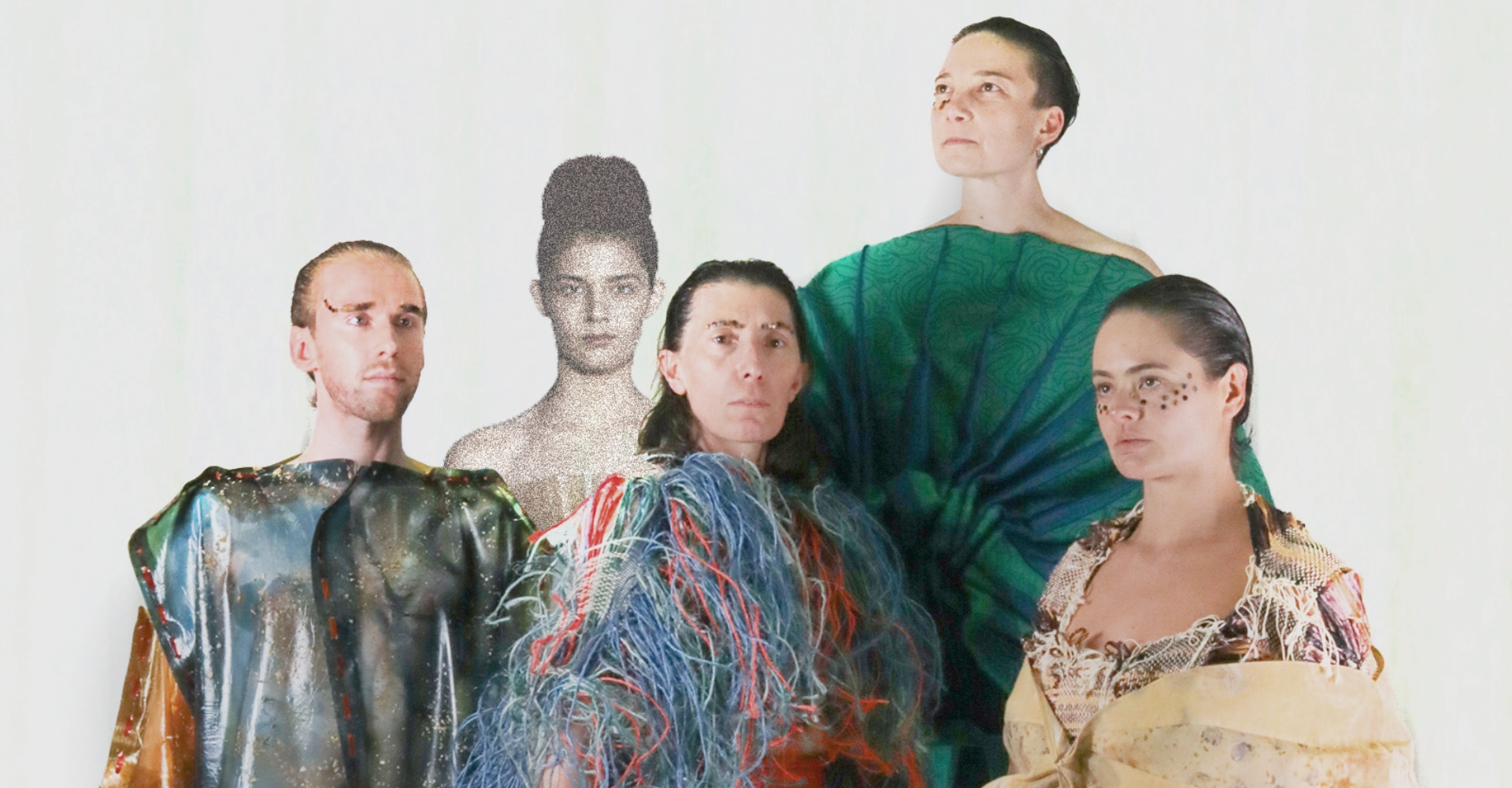In an era of radical transformation, fashion is not just about dressing the body—it becomes a language to imagine the future. The Future of Craft, Andreea Tron’s project, explores the dialogue between traditional craftsmanship and new technologies, demonstrating how innovation can emerge from the encounter between past and future.
Times of change push people to envision the future with greater intensity. This need to project forward stems from the desire to reinvent the world with optimism and creativity. As Björk states: “We have to imagine something that doesn’t exist, carve into the future intentionally, and reclaim space for hope.”
From this perspective, The Future of Craft was born, a collection developed as part of Andreea Tron’s master’s thesis at the FHNW Academy of Arts and Design in Basel, Switzerland. The project explores how traditional craftsmanship can interact with emerging technologies in fashion, proposing speculative scenarios where craft evolves into an innovative design tool.
The research delves into the historical and potential value of craftsmanship, intertwining various fields: the family heritage of hand weaving, zero-waste pattern making, 3D digital weaving, innovations in bioplastics, and AI-driven fashion design.
At the heart of the thesis is a sci-fi narrative titled “Was My Grandmother Worried About Her Carbon Footprint?”, written with AI support. Set in 2204, the story describes a utopian world where craftsmanship and technology coexist harmoniously. The protagonists embody different aspects of this relationship, exploring themes of community, kinship, and new forms of production.
The characters and their symbolic roles
The exhibition showcases the garments worn by the five protagonists of the story, each representing a different approach to integrating craft and technology:
→ The Memory Shepherd is a master weaver who preserves ancestral knowledge. Her coat, inspired by traditional shepherd cloaks, symbolizes the continuity of tradition.
→ The Robotic Therapist, her apprentice, merges technological and artisanal skills, wearing a zero-waste dress made with 3D weaving techniques.
→ The Textile Accountant manages textile waste for space exploration. Their outfit is crafted with natural dyes and handwoven modules.
→ The Circular Food Innovator transforms waste into biodegradable materials, embodying the principles of a circular economy.
→ The Digital Concierge, an AI assistant, supports the other characters, demonstrating how craftsmanship can evolve through collaboration with non-human entities.
Craft as a shared heritage
Through its narrative approach, “Was My Grandmother Worried About Her Carbon Footprint?” moves beyond the idea of craft as a family legacy, redefining it as a collective cultural heritage. The Memory Shepherd does not merely pass down technical knowledge; she fosters connections that reflect Donna Haraway’s theory of “making kin” beyond blood ties. The project also highlights the role of multispecies networks, such as the Digital Concierge, showing how craft can expand and be enriched through digital tools.
The Textile Accountant brings ecological responsibility to the forefront, combining traditional knowledge with cutting-edge innovations to minimize waste. Meanwhile, the Circular Food Innovator proposes a community model that rejects capitalist logic, demonstrating how circular practices can redefine the relationship between production and consumption.
An optimistic and collaborative future
The Future of Craft presents a positive and inclusive vision of the future. Instead of a contrast between traditional craftsmanship and technology, it envisions a harmonious collaboration. Inspired by Ursula K. Le Guin’s Carrier Bag Theory of Fiction, the project recognizes the value of accumulating diverse experiences and skills
In this scenario, digital tools do not replace traditional craft but enhance it. At the same time, artisanal techniques are enriched by digital methods, giving rise to a more fluid and innovative creative process.
In contemporary fashion, technology and craftsmanship are not opposing forces but two sides of the same coin. The Future of Craft demonstrates that it is possible to preserve traditions while reinventing them to face the challenges of tomorrow.
CONTRIBUTIONS
The Future of Craft was developed as a master’s thesis by Andreea Tron at the FHNW Academy of Arts and Design in Basel, Switzerland, with the support of academic and professional partners. The exhibition includes the garments created for the speculative story’s characters and offers a profound reflection on the future of sustainable fashion and material research.
